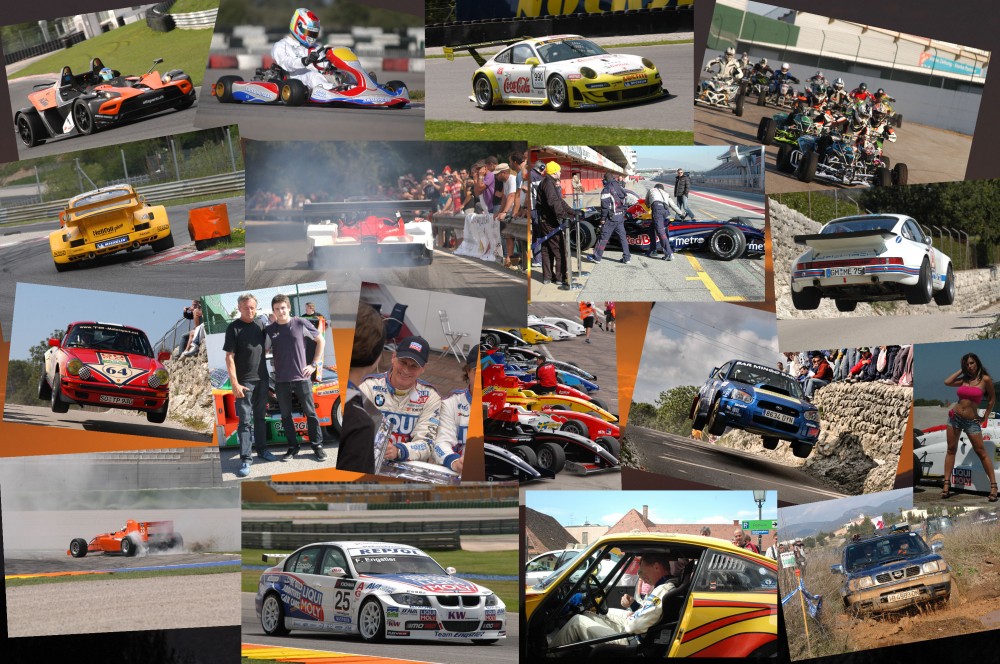
Clinching his first World Touring Car Championship crown, Rob Huff became the series fourth different champion following Andy Priaulx (2005, 2006 and 2007), Yvan Muller (2008, 2010 and 2011) and Gabriele Tarquini (2009).
46 drivers of 18 nationalities took part in at least one event during the 2012 season, at the wheel of twelve different models built by six car manufacturers: BMW, Chevrolet, Ford, Honda, LADA and SEAT.
Robb Holland was the first competitor ever from the USA to enter in a WTCC meeting.
The seasons finale at Macau featured the largest field, with 29 drivers at the start, while the average participation over the twelve events of the year was 23.3.

MULLERS NEW RECORD
Yvan Muller claimed nine race victories during the year, setting a new record for a single season. The previous one eight dated back to last year and belonged to Rob Huff and Muller himself.
In 2012 Huff focused on consistency. He won five races, four less than Muller and one less than Alain Menu. However he finished on the podium 17 times, against Menus 16 and Mullers 14; Huff also failed to score in two races only, while Menu and Muller remained scoreless in three races.
Mullers nine victories meant that he has been the first driver to reach 30 race wins; Menu and Huff are equal in second place with 23.
Three other drivers won races this year: Stefano DAste joined the winners club claiming his first two WTCC successes, Norbert Michelisz and Gabriele Tarquini won one race apiece.
Tarquini is the only driver who scored wins in all the WTCC seasons so far: 18 in eight years.

MENU THE FASTEST MAN
Alain Menu emerged as the fastest man in qualifying. He won pole position in four of the twelve events, while Muller topped the qualifying session three times, Huff and Tarquini twice, Michelisz once. In the all-time table, Menu and Tarquini are co-leaders with 15 pole positions.
The closest gap between the poleman and the second was 0.026 seconds at Shanghai, when Menu beat Muller, while the average gap over the season was of 0.258.
In the live-or-die battle to win a place in Q2, the average gap between the 12th (last qualified) and the 13th (first excluded) was of 0.055 seconds. The closest gap was recorded in Marrakech, where Pepe Oriola cut Franz Engstler off by only two thousandths of a second. For three times Engstler was the first driver to miss the cut, while this happened twice to Tom Coronel, James Nash and Alberto Cerqui.
Besides the three Chevrolet works drivers, Tarquini was the only one who made it to Q2 in all the events, while Pepe Oriola and Tiago Monteiro failed only twice. Rickard Rydell, Michel Nykjær and Colin Turkington had a perfect record, as they qualified for Q2 in the sole event they entered.

DASTE KING OF REVERSE POLE
In 2012, the number of drivers admitted to Q2 was increased from ten to twelve, but the number of positions to be reversed on the grid for Race 2 remained ten. This in order to avoid possible strategies to secure the pole.
Of all the drivers, Stefano DAste was the best interpreter of the new regulations and managed to claim the reverse pole position on four different occasions. Which put him in the position to win on the Suzuka East Circuit, where overtaking is nearly impossible.
Norbert Michelisz was the poleman on the reverse grid twice.

FORD’S FIRST LEADING LAPS
The twenty-four races of the 2012 WTCC totaled to 320 laps, including 16 behind the safety car, which equated to a race distance of 1358,47 kilometres.
Yvan Muller led nearly one third of the total laps; the 2011 champion was ahead of the field for 106 laps, much more than Menus 85 and Huffs 43. Behind the Chevrolet trio, ranked DAste and Michelisz with 33 and 27 laps led respectively.
Looking at the all time statistics, with 369 laps led, Muller is the only driver who topped the 300 mark, while Menu is second with 297.
In the 180 races held since 2005, thirty-three drivers have managed to stay in the lead for at least one lap. During the 2012 season three new members joined the club: James Nash (4 laps in Marrakech, the first ever Ford car leading a WTCC race), Mehdi Bennani (3 laps at Sonoma) and Alex MacDowall (1 lap at Macau).

MICHELISZ CONSISTENT LIKE HUFF
Just like Rob Huff did in the Drivers Championship, Norbert Michelisz focused his attention on consistency in his hunt for the Yokohama Drivers Trophy.
The Zengö Motorsport driver won five races during the season, the same amount of his closest rival Pepe Oriola, but two less than Stefano DAste who eventually was classified third in the standings.
Michelisz claimed a serious stake on the title by scoring points in 17 out of the first 18 races. And although he only pocketed five further points in the final six races, the margin he had built was enough to earn him the final victory.
The Hungarian was also the best Yokohama Trophy competitor in the overall championship, where he finished sixth, just ahead of DAste and Oriola.

LUKOIL BEAT ROAL BY FOUR
Four points only separated Lukoil Racing Team and ROAL Motorsport in the final classification of the Yokohama Teams Trophy.
Thanks to the double points awarded in Macau and to Tom Coronels withdrawal in the second race on the Guia circuit, the Lukoil duo of Gabriele Tarquini and Aleksei Dudukalo managed to overturn the positions.
Although Tarquini was the driver who scored most of the teams points during the season, it was Dudukalo who decided the final outcome by finishing seventh in Macaus Race 2 after his team-mate retired, his car damaged by debris on the track.
